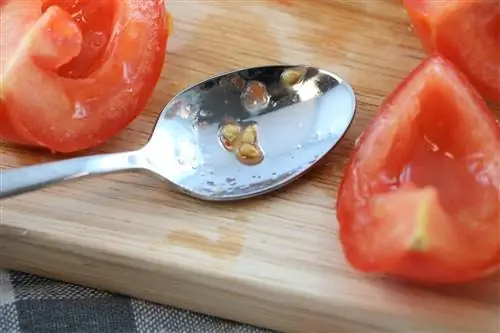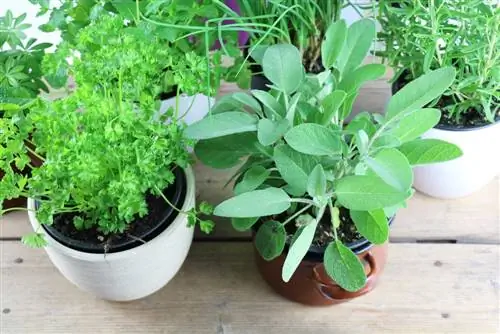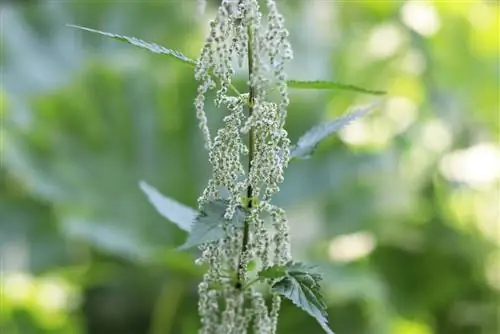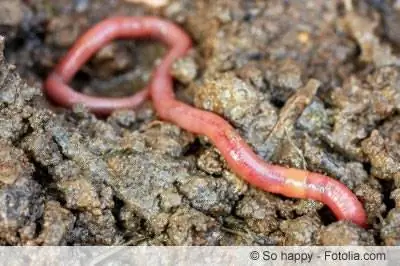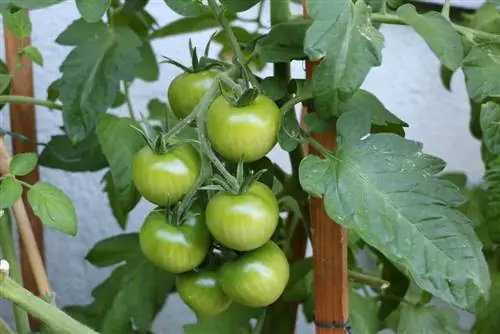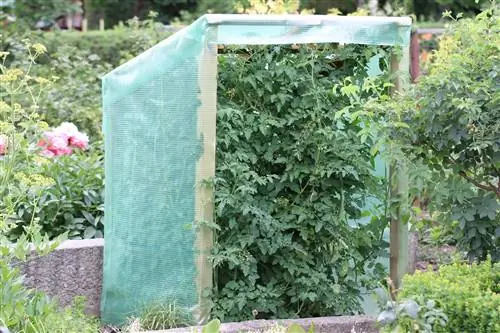- Author admin [email protected].
- Public 2023-12-17 03:39.
- Last modified 2025-01-24 12:45.
Especially the home-grown tomatoes, which taste really good with a lot of love and hard work, are what everyone always wants to have in their garden. That's not a problem, because seeds can be easily obtained from tomatoes. This can then become delicious tomatoes again next year. But a few things should be taken into account so that the seeds can actually germinate. If you keep this in mind, you won't have any problems with seed extraction, especially since the seed from a single tomato is usually enough to get a good harvest.
First remove the case
In order for the tomato seed to germinate, the shell surrounding the seed must first be removed. To collect seeds, simply remove the seeds from the tomato with a small spoon. Then put the seeds including the pulp in a bowl of water. As a rule, the seeds can then be poured into a sieve after about two days. Then clean the seeds of any remaining slippery coating and then place them on a kitchen paper towel. The slippery shell comes off the seeds and lies at the bottom of the jar.
Just let the tomato seeds dry
If the seeds can now lie on the kitchen paper until they are really dry. This means they last up to 5 years and can be activated again and again during this time. This also guarantees that no chemicals or other means were used to obtain the seeds. Especially because the delicious tomatoes that tasted so good the year before grow from them again. As a rule, you can grow seeds from almost any fruit or vegetable yourself, which of course makes the gardener happy. After collecting the seeds, simply store them in a dry bag until it is time to put them back in the ground. It is really important that the tomato seeds are stored in a dry place so that they spoil in moisture or start to germinate prematurely.
Planting homemade tomato seeds
Of course no one wants to store the seeds forever, but rather have delicious tomatoes in the garden again. In order for the seeds to become tomatoes again, they must first be grown. Pre-growing pots are suitable for this and are then filled halfway with pre-growing soil. Then use a pen to poke small holes of about half a centimeter. Place one seed in each of these holes and then fill the pot completely with soil. Then wet the soil well with a spray bottle and place it in a warm and sunny place. It is important that there is no draft, otherwise the homemade tomato seeds will not grow and, above all, the soil must be moistened several times a day. It is important that the seeds now receive a lot of moisture, otherwise they cannot grow.
Pricking individually is important
After a certain amount of time, the tomato plants will be ready to move into larger pots. These should have a diameter of 8 centimeters so that there is enough space. This step can be taken when the tomato plant has three leaves and is therefore fully formed. Afterwards, water the young plants regularly but only sparingly so that they don't get their feet wet. If you have a greenhouse, you can start growing tomatoes from your own seeds as early as March. Under no circumstances should these young plants get cold. When the weather is mild, the young plants can get some fresh air. To do this, choose a place that is sheltered from the wind but sunny. However, these then have to be brought back in overnight as there is still a risk of frost at this early time of year. If you don't have a greenhouse, it's enough to start growing your own seeds in April.
Be careful with the water
If you mean too well with your tomato seeds and give them too much water, you will achieve the opposite of what you actually want. Therefore, only water moderately, otherwise the young plants can become ill. At some point they fall over and this is why this disease is also called fall over disease. This is caused by too much water and when the plants do not have enough space. Unfortunately, there is no way to save the young shoots because they simply rot away. Therefore, it is better to drink a little less water at once and more often a day. It is also important to prick out in good time so that each plant has enough space. In this case too, prevention is better than cure. Therefore, experienced gardeners often recommend loosening the growing soil with a little sand so that the water can drain away quickly.
Seed collection is so easy
Since collecting seeds is very easy, especially with tomatoes, no one has to buy new ones anymore. Above all, the long shelf life ensures that it can be stored really well. Especially if the harvest wasn't so good one year, your own seeds are still plentiful. Cultivation is then just as easy, even if there is a little work involved. But each plant rewards you with the tastiest tomatoes in the world. Simple yet effective, otherwise the tomato seeds end up in the trash. This then gives it the task that nature intended, especially without any chemical aids.
In organic farming
Hybrid varieties may not be used in organic farming. Seed packages must state that they are F1 hybrids. That's nothing negative. It means that it is quite resistant to diseases. However, the old tomato varieties are often the better in terms of taste. They are not easy to find in stores, but thanks to the World Wide Web they are still available in sufficient quantities. You are spoiled for choice when it comes to offers. It doesn't always have to be red or round fruits. You can try out a lot. You can then propagate the old varieties yourself.
Only true tomato seeds are suitable for propagation and breeding. All you need to do is cut up an overripe tomato and remove the pulp. There are various methods for this. You can press it through a sieve and wash it out. You can also cut the fruit in half and rub the two cut surfaces against each other. The seeds simply fall out along with a little liquid. Of course you can also use a spoon.
It's best to let the seeds stand for a while and then ferment them again in a cup with some pulp. Then they are washed out again or placed on a piece of kitchen towel and wiped off. They must be dried well before you can put them away. The tomato seeds must be kept dry, cool and dark until they are used next spring.
Another way is to let the seeds and the liquid dry on a kitchen towel for a few days. The liquid dries up and what remains are the seeds. This is probably the easiest way.
In March you sow your own seeds. A good place to store the plant bowl is a window frame out of direct sunlight. When the plants have sprouted four leaves, they can be separated. After the Ice Saints you can plant them outdoors.

